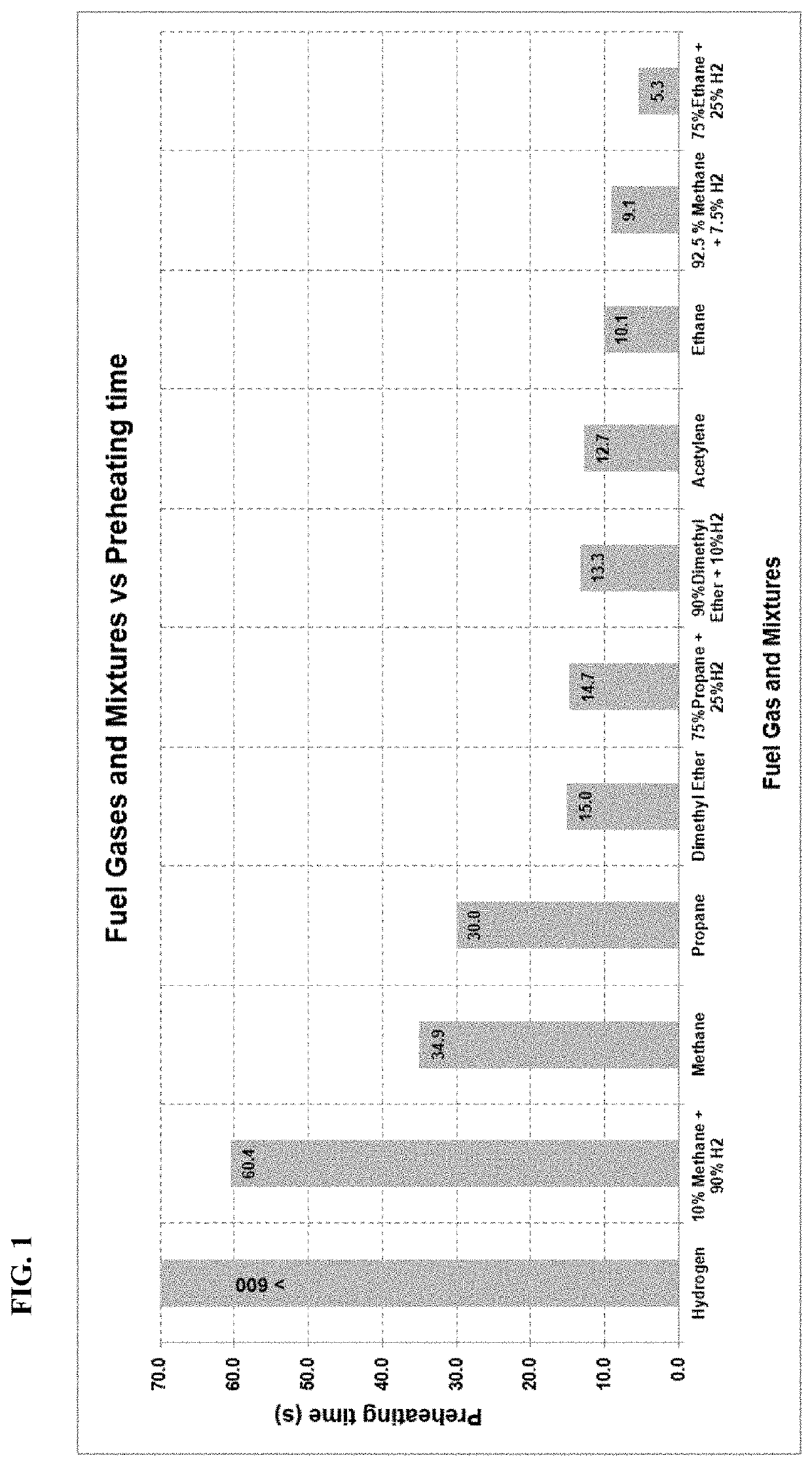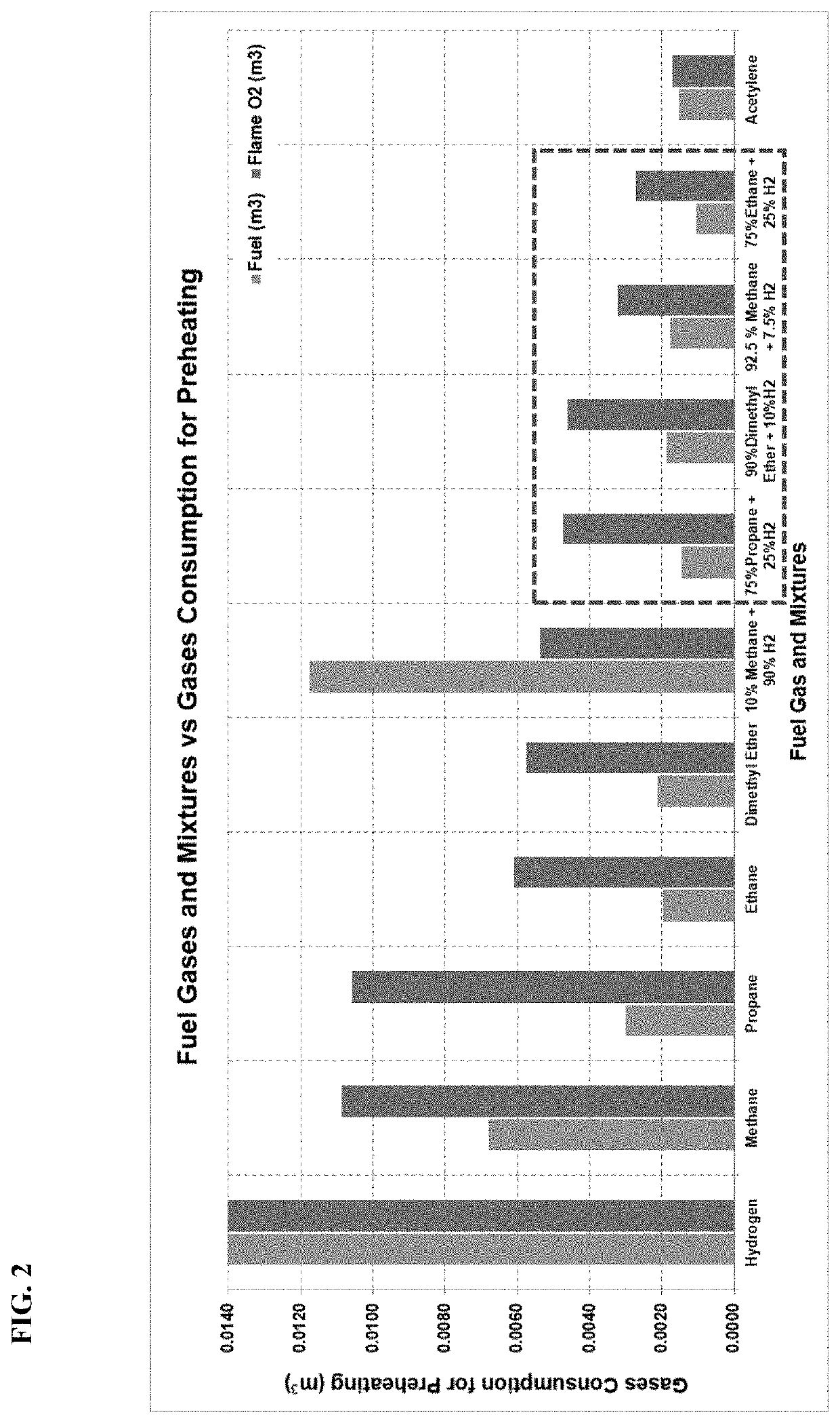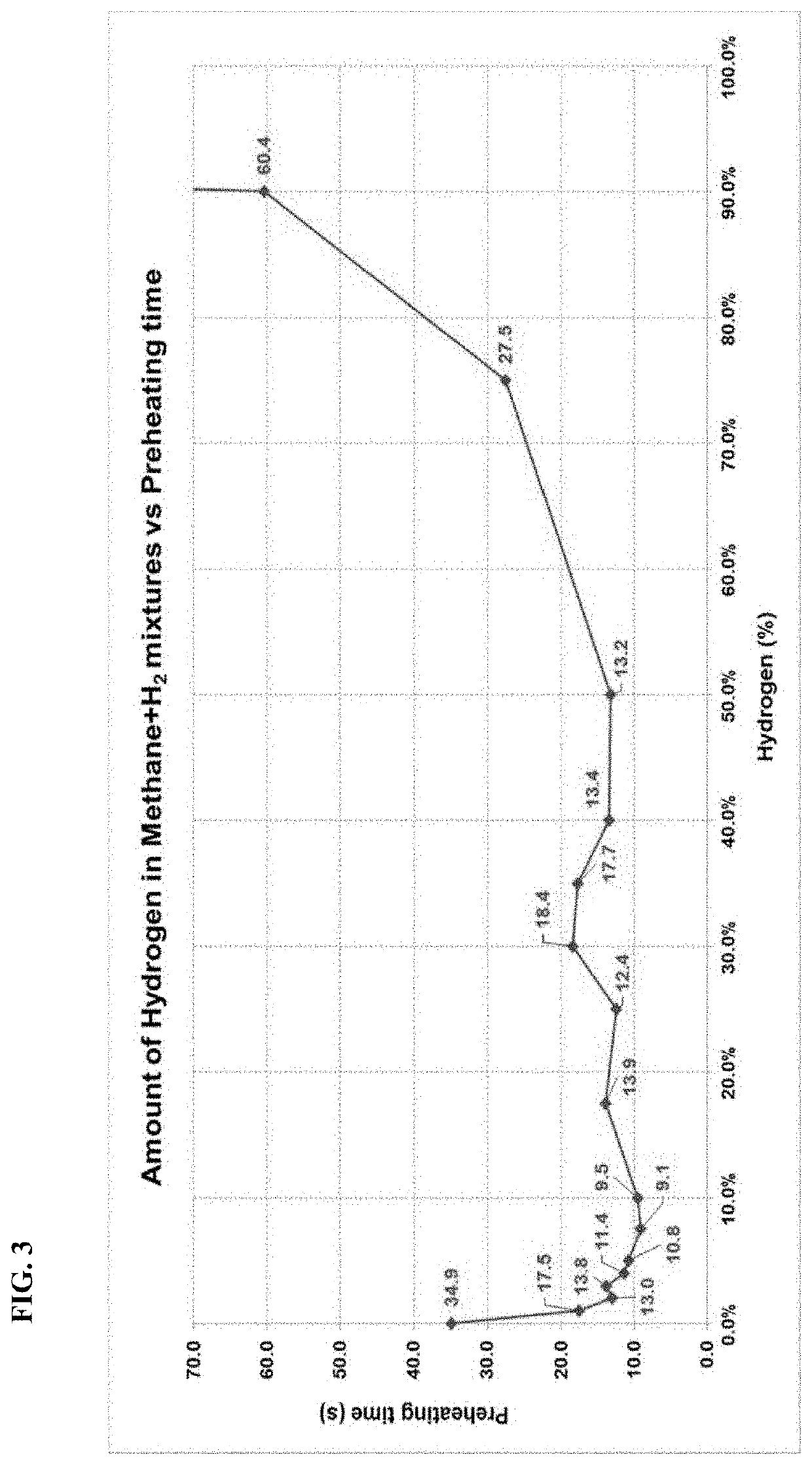Oxy fuel gas mixtures and methods for use
a technology of oxy fuel and gas mixture, which is applied in the direction of gaseous fuel, manufacturing tools, solventing apparatus, etc., can solve the problems of high cost, risky use, and difficult control of reaction, and achieve the effect of good heating characteristics and high cos
- Summary
- Abstract
- Description
- Claims
- Application Information
AI Technical Summary
Benefits of technology
Problems solved by technology
Method used
Image
Examples
example 1
Pure Fuel Gases and Its Mixtures With Hydrogen
[0068]Preheating tests were conducted using ASTM A36 carbon steel base metal to compare the preheating performance and flame oxygen consumption of gas mixtures comprising a base fuel with addition of hydrogen versus acetylene, ethane, dimethyl ether, propane, hydrogen and methane. As can be seen in Table 1, the preheating time (in seconds, “s”) for acetylene was 12.7 s; propane was 30.0 s; and methane was 34.9 s. However, surprisingly, the preheating time for a mixture of 7.5% H2 / 92.5% Methane was 9.1 s and for a mixture of 25% H2 / 75% Propane was 14.7 s.
TABLE 1Preheating ParametersGases consumption forFuelFlame O2preheatingPreheatingFlowrateFlowrateOxygen / FuelFuelFlame O2Fuel Gas and Mixturestime (s)(m3 / h)(m3 / h)Ratio(m3)(m3)Hydrogen600.00.700.380.50.11670.0633Methane34.90.701.121.60.00680.0109Propane30.00.361.273.50.00300.0106Ethane10.10.72.173.10.00200.0061Dimethyl Ether15.00.511.382.70.00210.005810% Methane + 90% H260.40.700.320.50.011...
example 2
Natural Gas / Methane (CH4) and Its Mixtures
[0071]Preheating tests were conducted using ASTM A36 carbon steel base metal to compare the preheating performance and flame oxygen consumption of gas mixtures comprising methane with different amounts of hydrogen. The preheating time performance and the fuel and flame oxygen flowrates and consumption can be seen in Table 2.
[0072]According to the present disclosure, a graphic representation of the piercing time improvement through the increase in the hydrogen (H2) used in the H2 / CH4 mixtures of interest is presented as FIG. 3. As shown in FIG. 3, as the amount of hydrogen in the mixture increases up to 75%, the preheating time decreases below that observed for the 100% methane sample. The addition of 1% to 17.5% of hydrogen in methane could reduce the preheating time in the range of 21% to 74%, confirming the superior efficiency of the heat transfer when hydrogen is mixed with a C1 hydrocarbon. The best performance was achieved when 5% to 10...
example 3
Propane (C3H8) and Its Mixtures
[0075]Preheating tests were conducted using ASTM A36 carbon steel base metal to compare the preheating performance and flame oxygen consumption of gas mixtures comprising propane with different amounts of hydrogen. The preheating time performance and the fuel and flame oxygen flowrates and consumption can be seen in Table 3.
[0076]According to the present disclosure, a graphic representation of the piercing time improvement through the increase in the hydrogen (H2) used in the H2 / Propane mixtures of interest is presented as FIG. 5. As shown in FIG. 5, as the amount of hydrogen in the mixture increases up to 35%, the preheating time decreases below that observed for the 100% propane sample. The addition of 10% and 25% of hydrogen in propane could reduce the preheating time in 44% and 51% respectively, confirming the superior efficiency of the heat transfer when hydrogen is mixed with a C3 hydrocarbon. The best performance was achieved when 25% of hydroge...
PUM
| Property | Measurement | Unit |
|---|---|---|
| pressures | aaaaa | aaaaa |
| pressure | aaaaa | aaaaa |
| pressures | aaaaa | aaaaa |
Abstract
Description
Claims
Application Information
 Login to View More
Login to View More - R&D
- Intellectual Property
- Life Sciences
- Materials
- Tech Scout
- Unparalleled Data Quality
- Higher Quality Content
- 60% Fewer Hallucinations
Browse by: Latest US Patents, China's latest patents, Technical Efficacy Thesaurus, Application Domain, Technology Topic, Popular Technical Reports.
© 2025 PatSnap. All rights reserved.Legal|Privacy policy|Modern Slavery Act Transparency Statement|Sitemap|About US| Contact US: help@patsnap.com



